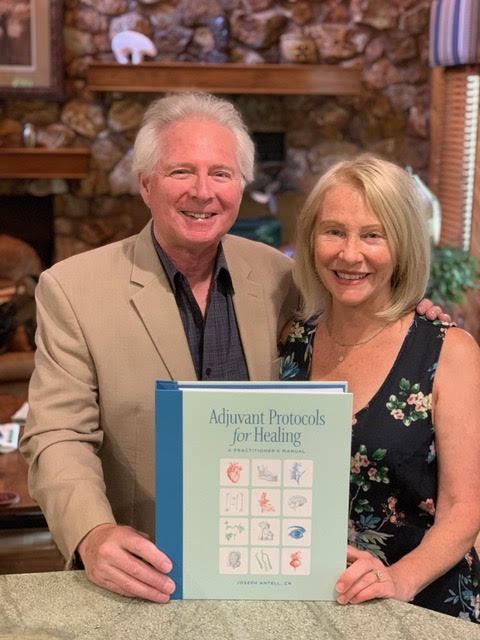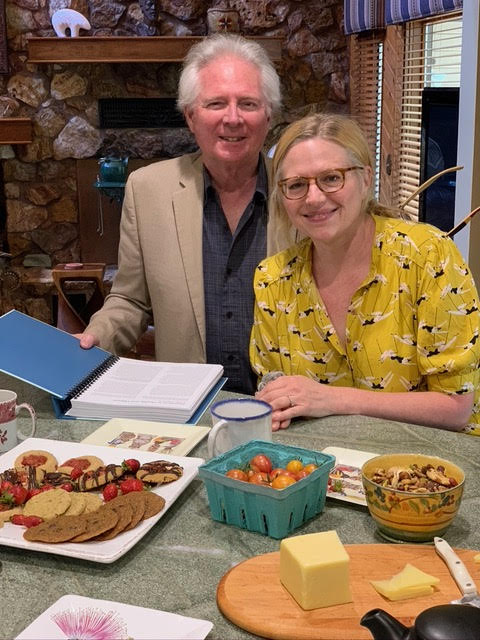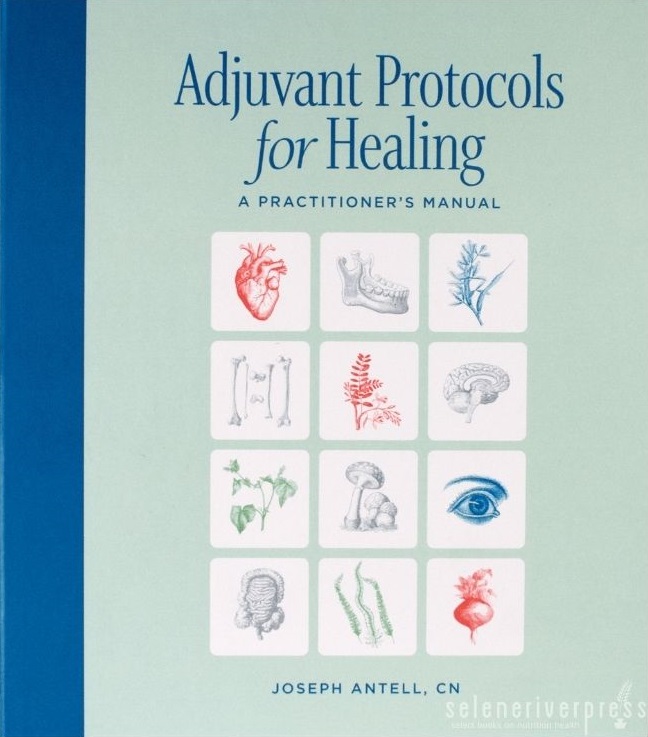The long-awaited Adjuvant Protocols for Healing: A Practitioner’s Manual by Joseph Antell is here at last! Practitioners now have at their disposal an essential resource on the art of building nutrition protocols that will complement their primary scope of practice.
Melissa Taylor of Whole Food Practice interviewed Joseph about how he came to write this in-depth guide and what value the manual contains for practitioners. Their conversation has been edited for length and clarity.
—Stephanie Selene Anderson, Editor-in-Chief, Selene River Press
Melissa Taylor: Hello, everyone. It is my greatest pleasure today to introduce you to my mentor, Joseph Antell, a leader and inspiration for helping practitioners grow their businesses. I’m really looking forward to all of you getting to know Joseph and hearing about his wonderful new nutritional reference manual. It will no doubt quickly become one of the most valuable tools for your practice. Published by Selene River Press, Adjuvant Protocols for Healing: A Practitioner’s Manual is the culmination of Joseph’s work over these past 49 years or so. Practitioners will greatly benefit from using this guide as an additional resource in support of what they’re already using.
Let’s begin by getting to know Joseph a little better. For over 12 years, he has been a mentor in nutritional therapeutics to Dr. Taylor and me. We can go to him with just about any question. He’s been a wonderful resource for us, and as a result of his new book, he’ll be a wonderful resource for you.
Joseph has been in and around Standard Process for many years. Starting out as a sales rep for Standard Process in New York, he went on to become a coach and mentor to many clinicians over the years. He is most recently known for his work with the Heart Sound Recorder (HSR). In addition to training new HSR practitioners, Joseph has provided feedback to the designers on what works and what hasn’t as well as the new HSR Assist Program for simplifying and streamlining reporting.
Now I’d like to bring Joseph on board. Hey, Joseph, how are you doing today?
Joseph: Great, Melissa, thanks so much for having me on. I appreciate you doing this.
It’s my pleasure. I would love for you to tell us a little bit about your humble beginnings with Standard Process and what you’ve done over the years. And of course we’d all like to know how you were inspired to write this book.

Joseph: Well, I think the goal of anyone who becomes a teacher or a mentor, as I have, is to pass on the wisdom, knowledge, and applications they’ve learned over the years. I’ve been with Standard Process since 1972. I trained in California with the national sales manager and the Lee Foundation for Nutritional Research. Mrs. Evelyn Lee, Dr. Royal Lee’s wife, hired me in 1973. I’ve been teaching Dr. Lee’s principles through Standard Process for all of these years. But even before that, I started using Standard Process in 1965, when I was just 13-years old and my mother took me to a chiropractor. The first product I ever took was Congaplex.
Adjuvant Protocols for Healing is a culmination of the knowledge I’ve been acquiring for almost 49 years now, much of it in the form of notes I’ve taken on the supplements and herbs that have worked for clinicians and their patients. About 10 years ago, my assistant and dear friend Ellen LeMoult started typing up all of these scraps of notes and organizing them into protocols. I mean, I don’t have a photographic memory—I don’t know about all of you! Who can keep all of this in their head?! So that’s where it came from. There are over 450 different protocols, and we organized them into various chapters, such as cardiovascular, children, dental, and so on.
I’m very happy to bring this to all of you. I use these protocols every day, and practitioners call me from around the country looking for starting points. That’s what this adjuvant guide is meant to be. The protocols are based on everything Dr. Royal Lee taught, everything I was able to bring forth from his wonderful wisdom and principles of truth. It’s not a matter of throwing a protocol of vitamins, herbs, or supplements at the client. We need to understand the principle behind what the client needs before we start rebuilding and restoring structure and function to their tissues with nutrition.
Tell us, why did you choose the word “adjuvant” for the title?
Joseph: Healthcare professionals have a defined scope of practice. This scope is defined by their education and noted in their state license. Naturally, these professionals often provide supportive and adjunctive care alongside their primary method of care.
Adjuvant refers to a protocol that is given as an adjunct to the primary treatment. It is an addition designed to help reach the goal. The protocols are meant to facilitate or enhance the effectiveness of the primary approach using diet, lifestyle, and natural supplementation.
This is why the recommendations in the manual are adjunctive—they assist the client in responding better to the primary treatment.
From what you just mentioned, I assume the book includes both nutritional and herbal products?
Joseph: That’s right. I’ve been applying Standard Process products in practice for many years. In 2000, I began studying herbs with MediHerb. I became certified and have been an herbologist for the last 20 years. The book lists about 125 different herbs that can assist the body in responding and finding that balance point.
I love that. Many of our clients are comfortable with Standard Process products, but it can be a stretch for them to start using herbs to complement the protocols they’re already familiar with. I think your manual will give practitioners more confidence in the use of herbs and where they would be most helpful. This combined reference is going to be a great resource for a lot of people.
Joseph: Along with that, quite a few of the protocols also include lifestyle recommendations. As naturalists, as nutritionists, we must teach people how to live, how to eat, how to move throughout the day. Certain syndromes pose challenges to the body unless you’re moving. If you’re not moving, you’re stagnating. And Chinese medicine teaches us that if you stagnate, you die. Many of these applications are in the book, as well as several dietary regimes and recommendations that I’ve found to support healthier function. I include lots of resources and outline techniques such as eye palming. I learned about many of these more natural approaches from my grandmother and mother. Older generations are familiar with many of these methods, which they both used and passed on.
It sounds like there are multiple gems in this book.
Joseph: Well, I think the protocols are the most important part of the book. When a practitioner calls me, the first question I ask is where do we start? You have to start somewhere, so the protocols are designed to start with the most focused nutrition related to a particular situation. For example, if someone has a gallbladder syndrome, well, the first thing you want to do is thin the bile. After all, gallstones are cholesterol formations caused by abnormal or irregular bile density or viscosity. To thin the bile, we recommend green beet leaf tops and beet roots, which are in Betafood. So very simple.
That’s why the protocols are my favorite part of the manual. You can use them to really hone in and begin assisting the doctor in tailoring a protocol of nutritional support for that person. The starting point gets to the core of the situation, which means the client gets help right away. That’s why they go to a healthcare practitioner. Whatever reason they walked into your office, that’s what needs to be addressed first. The depth of their response to the practitioner is so significant to you and your relationship with them.

What insight or guidance would you give to practitioners on using the manual to prioritize a client’s protocol? This can be a difficult topic to address. As you say, when they walk in, you must take care of the hot stuff right away—find out what’s going on and give them results fast. Can you tell us a little bit about how the protocols are organized to address the most immediate issue and not put the client on a protocol that may overwhelm them?
Joseph: Right. To help with that, the products in every protocol are prioritized in order of importance. Listen, I have so much respect for all of you and what you have found to be true as practitioners. I don’t want to take away from that. I want to add to it. So if, for example, you wanted to just use the first two products listed, you can.
Throughout the book, most of the protocols list four primary products in order of importance. Underneath the top four, there is an “Also Consider” list. That is, if you don’t get the response that you’d like to see, you might also consider these other products from a synergistic viewpoint and explore adding them or using them instead. The manual is designed to let the practitioner choose what to select from the list and how to incorporate them into what they’re already doing.
This leads to something else you get with the book: my ongoing teaching. I will be holding webinars and teaching seminars using Adjuvant Protocols for Healing. I will be teaching this book for the rest of my life, or until I can no longer speak!
I’m glad to hear that! Thank you so much, Joseph, for organizing the many, many notes you’ve accumulated over the past 49 years into this wonderful manual.
Joseph: Yes, and as I say Ellen played such a huge part. And then of course Selene River Press. I cannot say enough about them and their ability to turn the raw material Ellen and I gave them into this beautiful, easy-to-use book. They are truly masters at their craft.
Melissa Taylor: The name of this book is Adjuvant Protocols for Healing: A Practitioners Manual, and it’s from Selene River Press. The beautiful hardbound cover comes with a perfect binding over a semi-concealed spiral that lays flat and folds back like a workbook—impressive for a book that comes in at 448 pages. At $150, it’s a lifetime investment and well worth it. But better yet, for only $25 extra, you’ll receive searchable PDF files of every protocol. You’ll be able to print them or even email protocols to your patients. I mean, what a great tool that is, right?
At Whole Food Practice, we are proud to count Selene River Press as the publishing source for our Applied Clinical Nutrition program, but we also appreciate them for providing us with so many ongoing materials to learn from. So give Selene River Press and Joseph Antell your support. Let’s go out in hoards and purchase this great new reference guide to use in our practices. We’ll be sure to find all kinds of gems that will help us get better results every single day.


